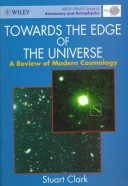Wiley-Praxis Series in Astronomy & Astrophysics
2 total works
This text is an overview of modern cosmology, written at a suitable level for undergraduates. It introduces the main constituents of the universe, and the methods most commonly used to study them. It then discusses some of the latest ideas and theories in modern cosmology, including studies of active galaxies and IRAS galaxies, the discovery of the cosmic microwave background radiation and its impact on the Big Bang Theory, and the latest thinking on the age and size of the universe. Worked calculations are included throughout the book, and diagrams plus mono and colour photographs illustrate important aspects of the text.
Extrasolar Planets The Search for New Worlds Stuart Clark There have recently been many exciting developments in the search for planetary-sized bodies orbiting Sun-like stars. This book provides a timely, readable, yet comprehensive overview of this fast moving field. It presents the very latest discoveries and ideas, and covers the wealth of new and important observational data. An increasing number of suspected planets outside our own Solar System are now being found, and many objects have been independently confirmed. Surprisingly, the extrasolar planets discovered so far display orbital properties more diverse than those found in the Solar System. The implication of these discoveries for theories of planet formation and the possibilities of life elsewhere makes this an exciting and important field. In Extrasolar Planets, Stuart Clark discusses the formation and evolution of stars, and the processes leading to the formation of protoplanetary discs, planetesimals, embryonic planets and complete planetary systems. He describes in detail the various techniques currently being employed for the detection of extrasolar planets, and the results of searches to date.
The author reviews the evidence for all suspected extrasolar planets, and discusses the theoretical problems posed by giant planets with small orbital radii and those in highly eccentric orbits. Brown dwarfs and possible planets around pulsars are also explored. The 'habitable zone' is described in the context of extrasolar planets which might support life, and the book discusses future planned searches for extrasolar planets, including those designed to detect Earth-sized worlds. Readership: Undergraduate and postgraduate students of astronomy, astrophysics, planetary sciences, life sciences, space science, physics, biophysics and theoretical physics, and professional researchers in these fields. Amateur astronomers and non-specialists having an interest in planetary science in general and extrasolar planets in particular.
The author reviews the evidence for all suspected extrasolar planets, and discusses the theoretical problems posed by giant planets with small orbital radii and those in highly eccentric orbits. Brown dwarfs and possible planets around pulsars are also explored. The 'habitable zone' is described in the context of extrasolar planets which might support life, and the book discusses future planned searches for extrasolar planets, including those designed to detect Earth-sized worlds. Readership: Undergraduate and postgraduate students of astronomy, astrophysics, planetary sciences, life sciences, space science, physics, biophysics and theoretical physics, and professional researchers in these fields. Amateur astronomers and non-specialists having an interest in planetary science in general and extrasolar planets in particular.

